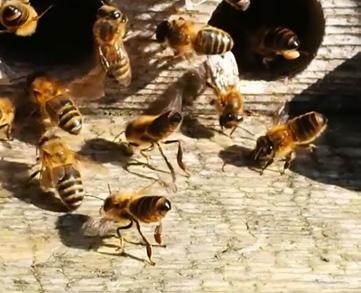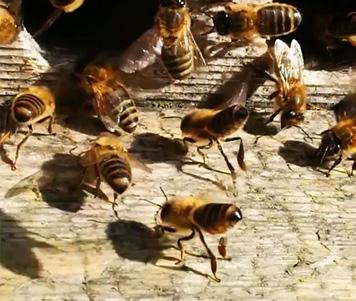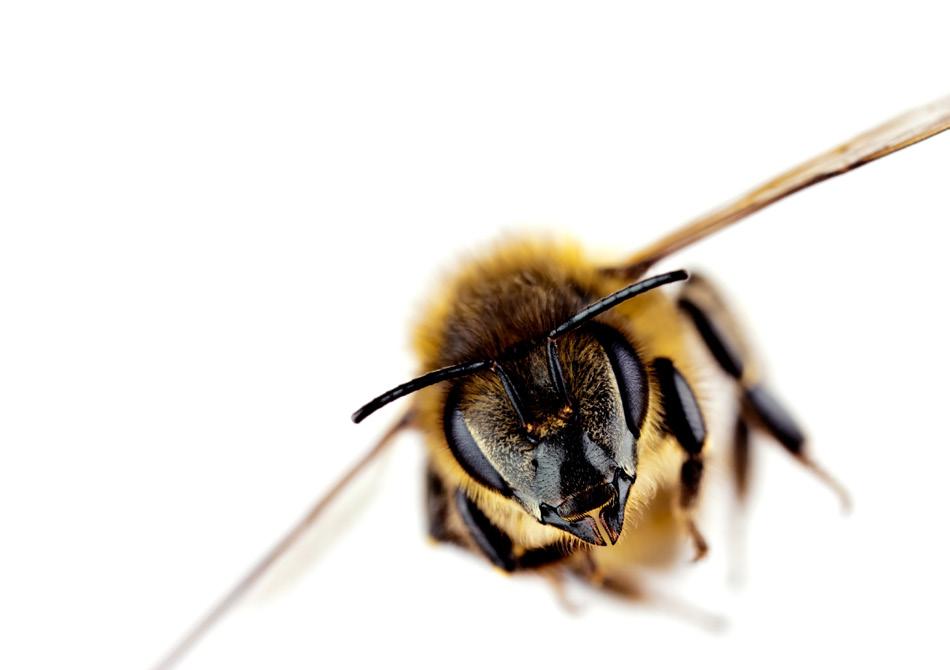
3 minute read
BEEHAVIORS - The Waggle Dance
BY MARTYNA KROL
Last summer, we put our apiary through some major changes. We broke some “traditional” beekeeping rules and tested some new ideas. One of the chances we took was moving a colony from one hive to another, but only two meters away from the original one.

An old saying teaches beekeepers to move the hive less than three feet (one meter) or more than three miles (10 kilometers), and if true, our bees were doomed to die for the sake of that extra meter traveled. Luckily, thanks to their amazing ability to re-orient better than my car’s GPS on a roundabout, they survived! However, upon the grand opening of their new hive, a number of them greeted us with a funky ‘butt dance.’
Long before Miley Cyrus popularized twerking on stage, similar behavior was observed in the natural world. In birds, this could be a romantic dance; in dogs, it could indicate the presence of parasites. But in bees, this can mean several things. Let’s have a look at some of the messages passed on in the ‘waggle dance.’
Hey, homie!
In our case, a few guard bees perched just outside the entrance, lifting their backsides and shaking them vigorously, while also fanning their wings.
What we can’t see with the naked eye is that they are exposing their Nasonov gland, located just at the tip of their abdomen. It creates and releases a strong pheromone, which sends a “this is home” message to any other bees which might have been locked out of the hive for the last couple of days. Nobody said it was a smooth move! The same activity happens when worker bees of a newly formed swarm find a hive. They indicate its location by wafting the pheromone towards the swarm. Once the scent reaches the remaining bees, they know in which direction to fly and immediately move into the new home.
Check out this new restaurant!
The most common use of the waggle dance is for a worker bee to inform the bees in the hive about a food or water source nearby. They change the circular moves slightly, depending on the distance between the colony and the flower.
Upon the grand opening of their new hive, a number of them greeted us with a funky ‘butt dance’



There are three different movements of the bee’s abdomen. One is for when the destination is within ten meters of the hive. Another signals up to 40 meters away and a third for when the distance is even greater.
The positioning of the sun is crucial, as it’s often used as an indicator of the direction of the food source. However, what I find fascinating is that usually, the waggle dance occurs in complete darkness.

Commercial beehives are often very dark, especially when full of honeycomb. Wild bees, which nest in rock crevices or fallen tree trunks in the woods, have had to develop a system of communication that functions even in the dark, using gravity as an orienteering tool.
Past the church, the third tree on the right, over the houses and down that valley; you can’t miss it!
The dance is not just about the twerking movement itself; it is, in fact, a complicated series of moves. While letting others know about a food source, the bee’s body points toward the honeycomb at the same angle as the sun is to the food. All the while, the gentle buzzing of the bee indicates the profitability of the food source.
Mindblowing, isn’t it?










